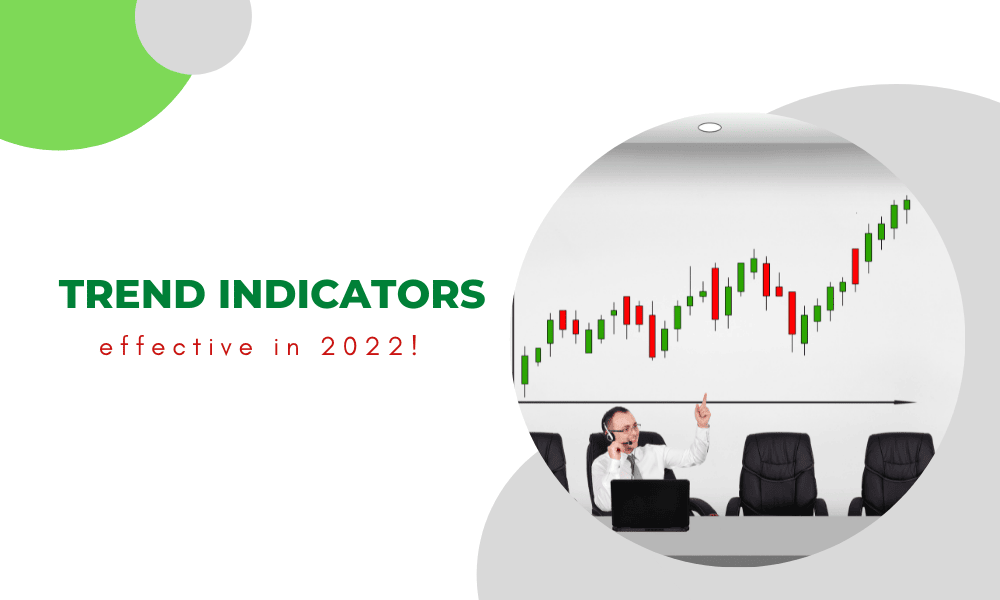Has this thought ever occurred to you, Why is there so much fuss about trend indicators (and why...

Has this thought ever occurred to you, Why is there so much fuss about trend indicators (and why are they so difficult to fabricate)?
That being said,
Want to know once and for all, everything about trend trading indicators that bring out immersive outcomes while also supporting your efforts?
And truth to be told,
All of that is quite a challenge, particularly when you consider that you have to achieve it all in just a few short paragraphs.
Here, you’ll find the BEST Trend Indicators of 2022 to gain consistent profits SUPER quickly that'll hook your trading stats from the very beginning, and support your strategic goals in the process.
So, let’s get started already!
Here are our 2022's Top Picks For "Best Trend Indicators"
Moving Averages The most commonly used indicators in the stock market are moving averages. In fact, other indicators like Bollinger Bands and Moving Average Convergence Divergence (MACD) build on them.
Moving averages can be used in a number of ways, such as an inverse. However, trend trading is the most popular use case for moving averages.
Essentially, a trending trader uses this indicator when adding a moving average to a chart and holding the trade as long as the price is above or below the moving average.
Simple, Smoothed, and Hull is examples of different types of moving averages. Many brokers and online platforms will include moving average indicators in their charting functions.
PS: Except for trend indicators, if you want to know more about trend reversal points (which is a bummer in 2022),
Here, check this out: Everything You Need To Know About Trend Reversal Points In 2022!
In the financial market, the Relative Strength Index (RSI) is the most widely used oscillating indicator. The dynamics of assets such as stocks, currencies, and exchange-traded funds are determined by this indicator.
The Relative Strength Index is often used to determine overbought and oversold levels. If the price of an asset rises over a long period of time, it is considered to be severely overbought.
The RSI indicator is a popular tool for trend traders in a variety of markets, particularly the stock exchange. To move higher, buy signals appear, while sell signals appear when the indicator continues to decline.
As with moving averages, Relative Strength Index indicators are generally included as an indicator option through online trading platforms.
In trading, price action studies the behavior of a security, index, or commodity to predict what it will do in the future. You may want to take a long position if your price action research suggests that the price will go up.
On a trading chart, price action indicators are flashes of activity that indicate the formation of a trend. Skilled traders can quickly spot these signs and use them to place smart market bets in real-time.
Price action signals, also known as price action patterns or price action triggers, are clearly identifiable patterns in market behavior that can be used to predict future market behavior.
Also, Are you the one who prefers Price Action over all the other trend indicators out there? Well, you would be surprised then!
Check this out: [Revealed] Why price action is better than trading indicators?
It's a type of indicator that is generated from standard deviation and moving averages. The centerline of the indicator represents the moving average of a period, while the top and bottom lines represent the standard deviations.
The standard deviation is generally 0.2 while the moving average is usually 20. The most common uses of Bollinger Bands are trend following strategies.
During an uptrend, the price almost always stays between the middle and top lines. Hence, as long as the price is between these two lines, the goal is to buy.
However, when the price is between the lower and middle lines, calls to sell will appear. If the price moves towards the bottom line of the bands then a negative trend will be strong.
When looking at a trading chart, it is helpful to know if the time period you are looking at is in sync with other time frames. The Multiple Time Frame Indicator (MTF) is a great tool for determining the trend towards higher time frames.
Using the red and green dots, you can easily see whether the price trend of your current time frame is with or against the general trend of the underlying asset. The point of using the MTF indicator for trading is to identify general price patterns.
Price patterns in indices, stocks, ETFs. , Currencies or any other instrument you trade stretches from the higher timeframes to the chart you are viewing. The trend will be stronger within the lower time frames as the time frames move up.
The timeframe is what a trader is basically looking for on these MTF lines as this information provides confirmation of directed or undirected activity.
There you have it!